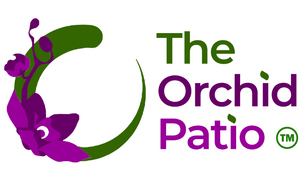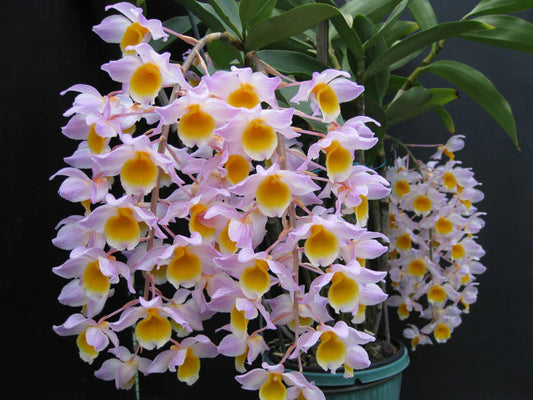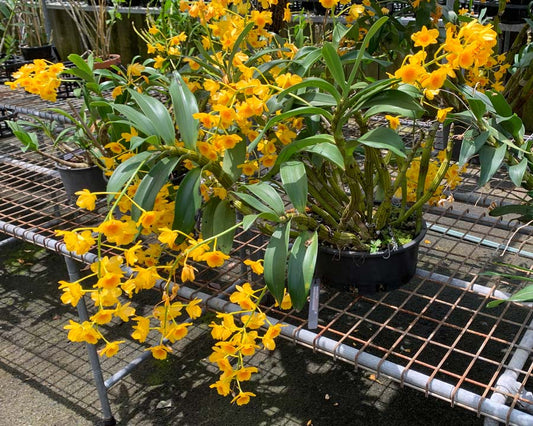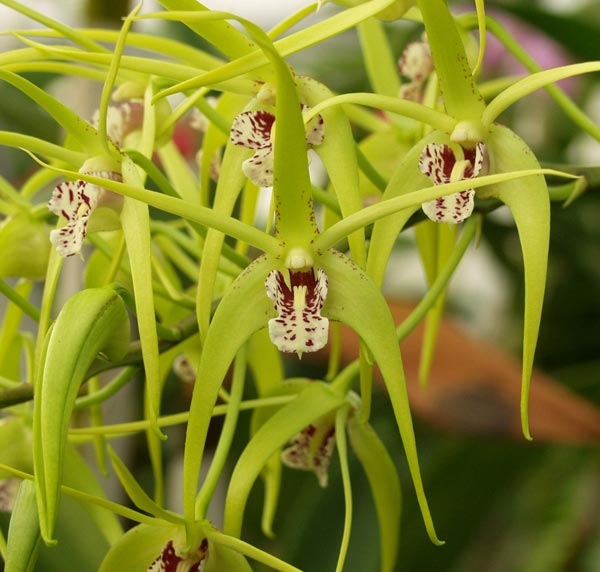
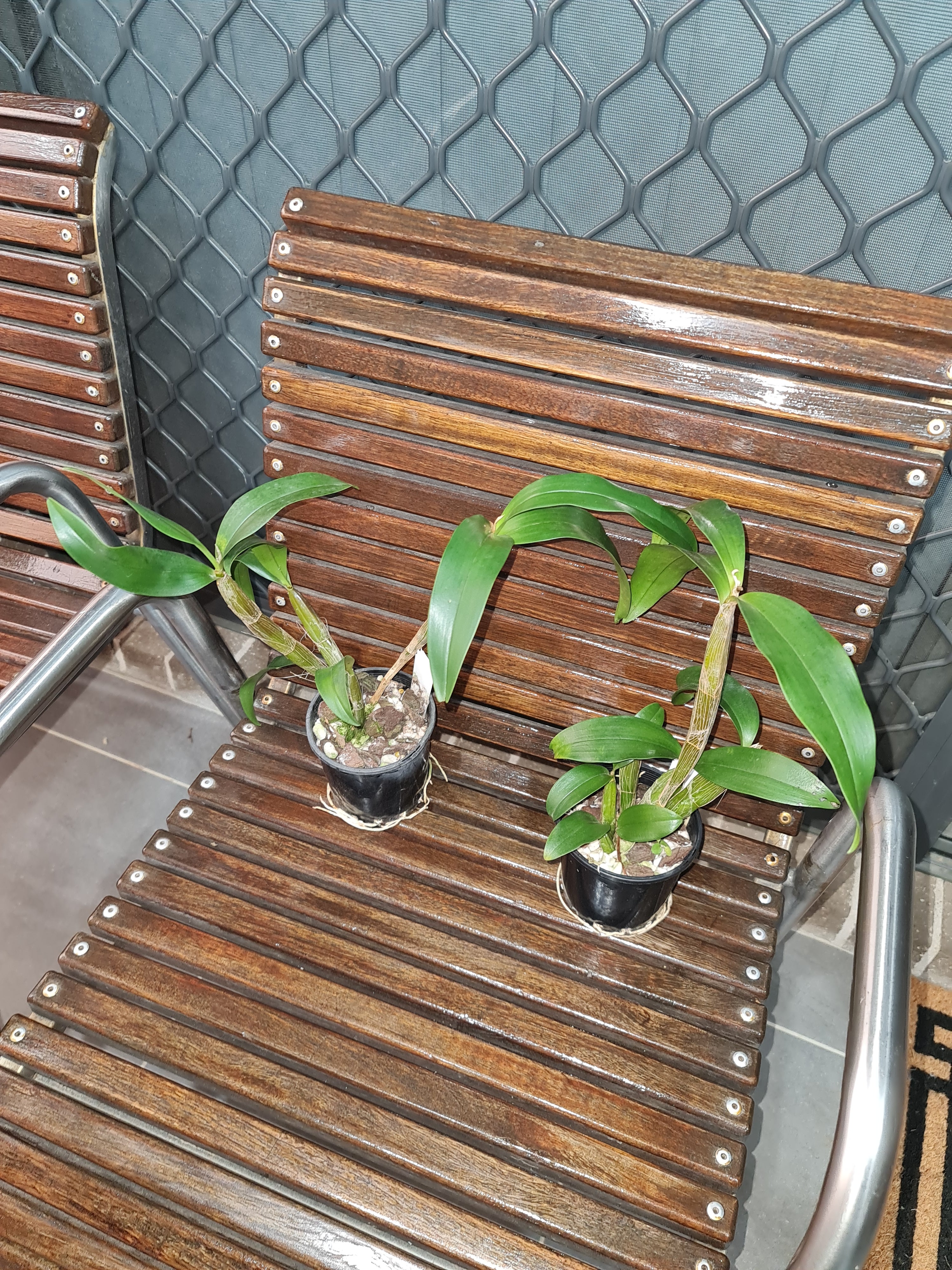
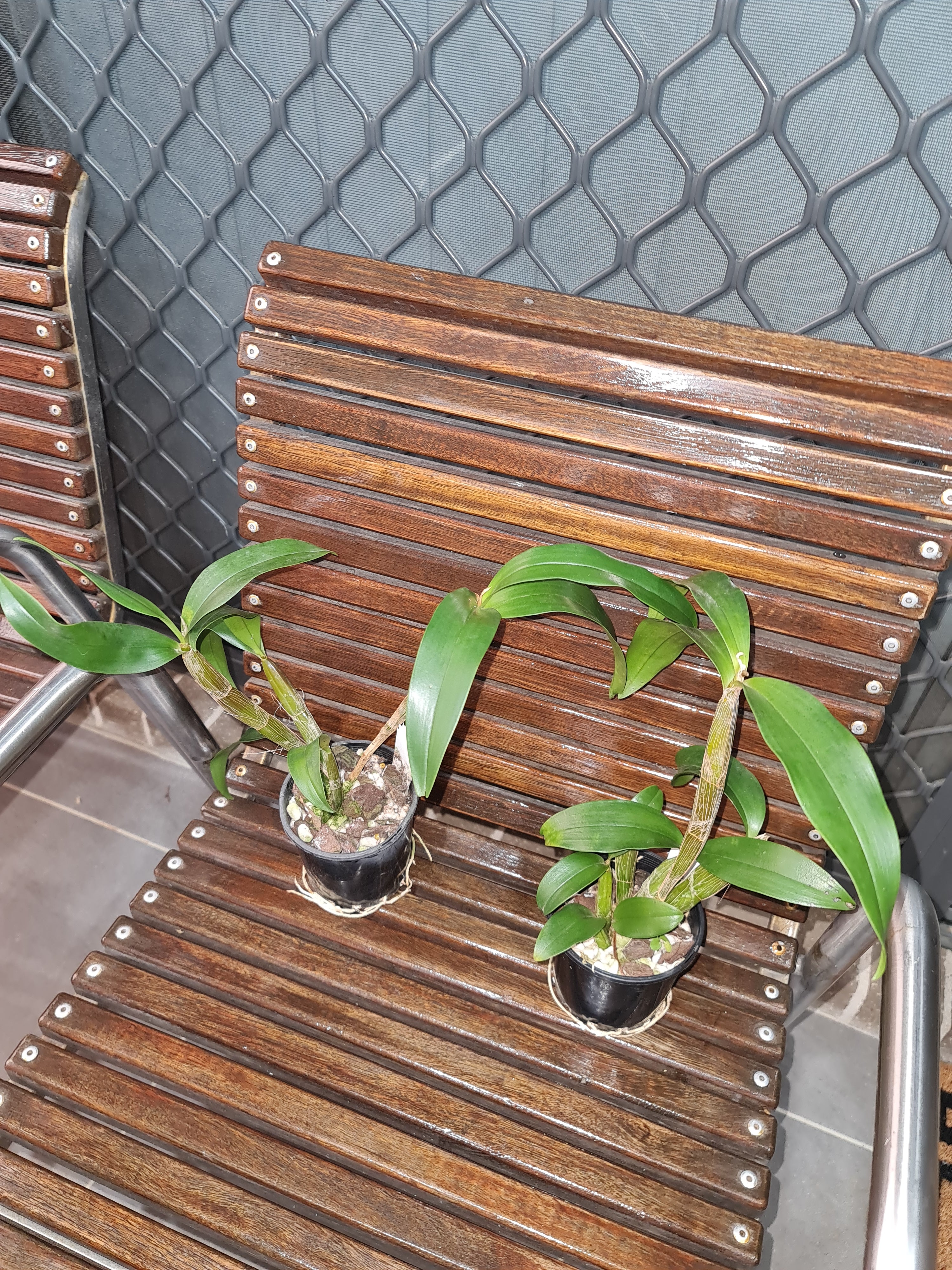
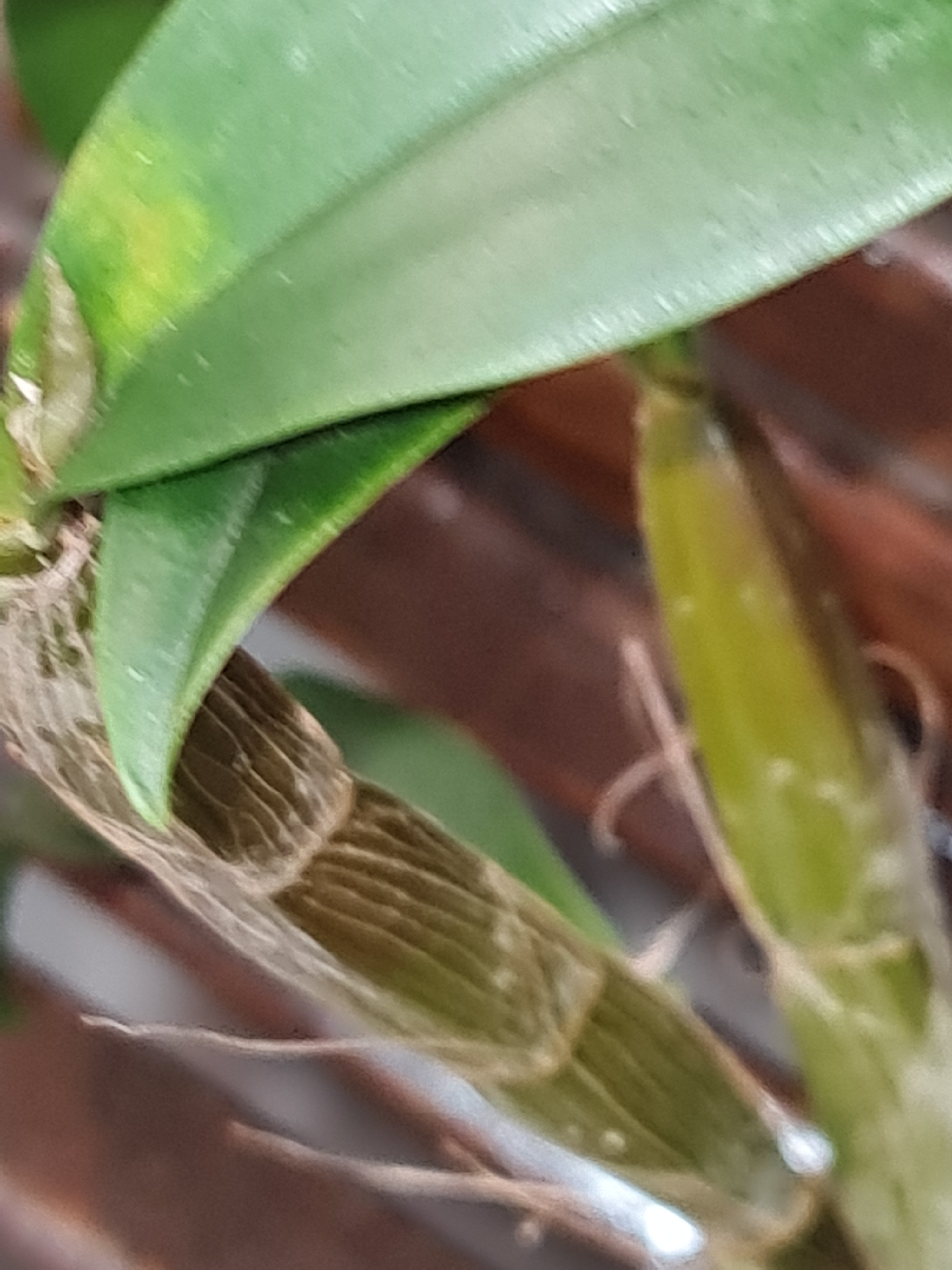
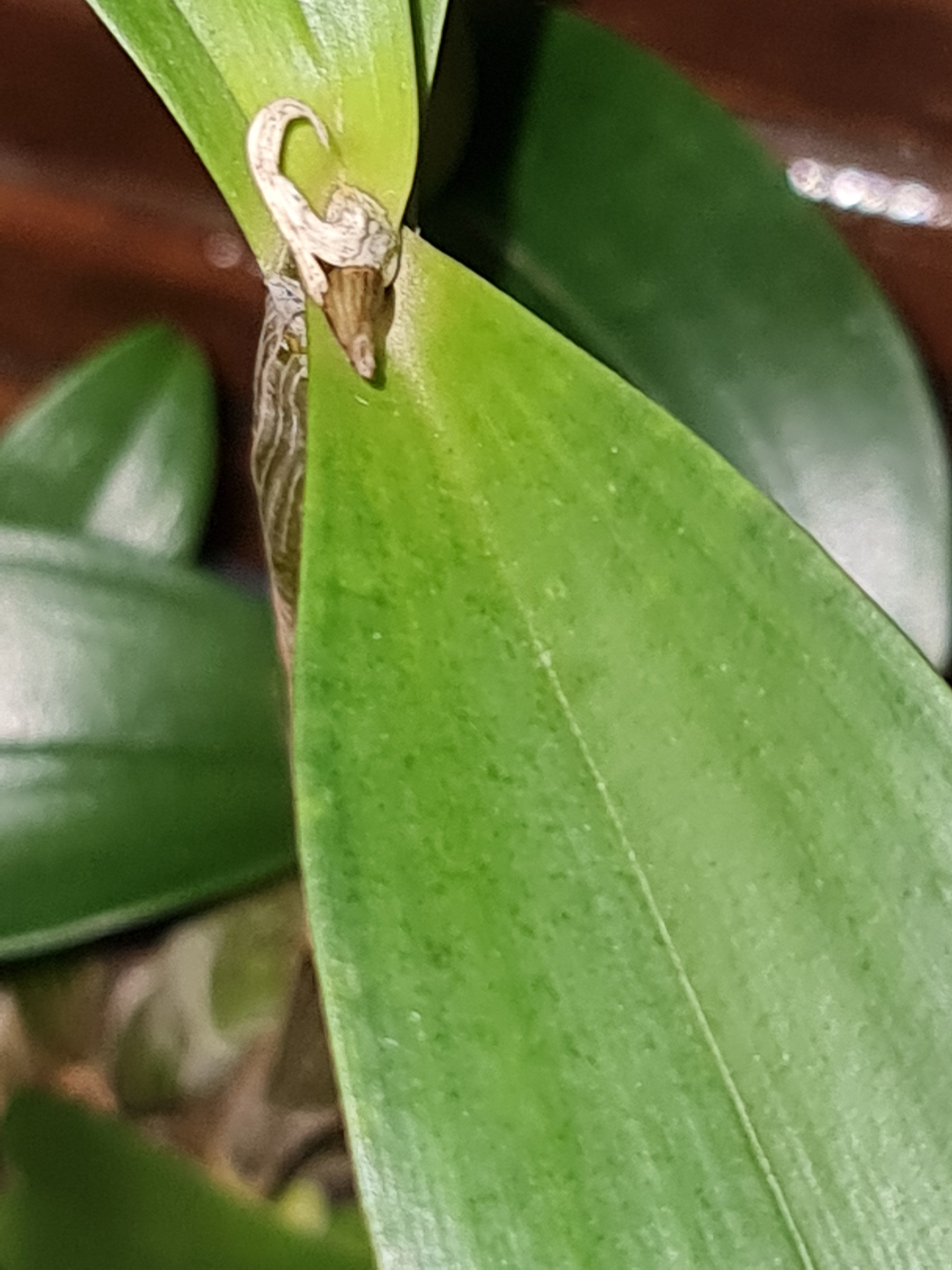
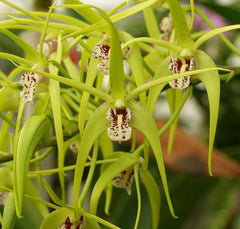
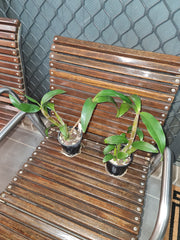
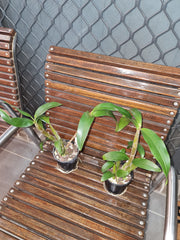
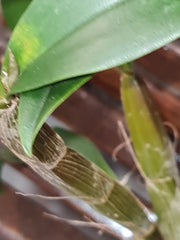
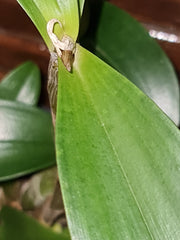
Description
xDen. Hilda Poxon is a primary hybrid between two spectacular species from Australia—Den. tetragonum and Den. speciosum var. compactum. Den. tetragonum is found in New South Wales and northern Queensland, Australia in humid ravines or gullies at elevations from 1,600 to 4,000 feet. The peculiar 4" to 10" pseudobulbs are spindle shaped length-wise and have a quadrangle (i.e., four angles) cross-section. Up to 5 very fragrant flowers bloom from spikes that arise near the apex of the pseudobulb. The inflorescence can rebloom over several flowering periods so do not remove any old inflorescence. It can also bloom from the nodes of old and new mature pseudobulbs. The spidery, sweet-scented flowers are approximately 2.5 to 3 inches in length, pale green or cream-colored to yellow with vivid red markings. Den. speciosum v. compactum is the compact variety of the Australian species speciosum, therefore they do not get as large and remain compact (often under 6-8 inches), making it perfect for growing under lights or on a windowsill. Dozens of small, highly fragrant, white flowers appear on long spikes in spring resembling a foxtail. Culture is similar to its relative Den. kingianum. It is very heat and cold tolerant and can take temperatures as high as 100°F, and as low as 32°F for a brief period of time. It can tolerate full sun though it is best to provide some shading to avoid leaf burn.
On offer the orchid is ready to flower very soon as it already start forming the flower spike.
Shipping & Return
xShipping
We ship orders to addresses in NSW, VIC, ACT, QLD, SA. We can ship orchid flasks to all states and territories in Australia. We do not provide international shipping. Note that we may be able to organise concierge service to ship plants to restricted states at an additional cost. Please contact us to find out if this an option available for you.
When you place an order, we will estimate shipping and delivery dates for you based on the availability of your items and the shipping options you choose. Depending on the shipping provider, shipping date estimates may appear on the shipping quotes page.
Please also note that the shipping rates for items we sell are weight-based. To reflect the policies of the shipping companies we use, all weights will be rounded up.
All orders are shipped on Monday and/or Tuesday to avoid the parcel from getting held in a depot on the weekend. All orders placed by 11:59PM FRIDAY will be dispatched on Monday and/or Tuesday, remaining orders will be dispatched the following week.
General Growing Tips & Tricks
xGeneral Growing Tips
| Light | The amount of light required by each orchid varies. This can be researched based on the species. However, as a general rule, never expose orchids to direct sunlight as this can burn the plant tissue. |
| Temperature | The temperature requirement varies based on whether the orchid is cool, warm or intermediate growing. However, most orchids grow comfortably in 18-22 degrees celsius. |
| Humidity | Most orchids prefer moderate to high humidity. Hence, the relative humidity should be maintained between 60 to 90 percent. |
| Air Circulation |
It is important that plenty or air circulation is provided to prevent diseases. |
| Diseases and Pests | Monitor orchids regularly for signs of disease and pests. If there is any evidence of disease or pests, treat with a suitable agent such as a systemic fungicide for fungal infections or a suitable insecticide for insects. |
| Nutrition | Orchids are slow-growing and require fertiliser to support growth. Ensure that you use a balanced orchid fertiliser regularly during the growth period to encourage faster development. |
| Dormancy |
Some orchid species such as catasetums and dendrobiums are deciduous, meaning they drop their leaves and rest in winter. Reduce watering and cease fertilising in this period. |
| Repotting | It is encouraged that you repot orchids only when the plant is outgrowing the pot. An orchid needs to be repotted when roots start growing outside of the pot vigorously and the pot swells or cracks. Only use a pot that is one size larger than the previous pot. Do not repot seedlings immediately upon receiving them as this can slow down growth and may cause transplant shock. When repotting, choose a pot with drainage holes so that water does not pool and cause root rot. |
If you have any questions or concerns about these growing tips, feel free to contact us. We love to help!
- Choosing a selection results in a full page refresh.
